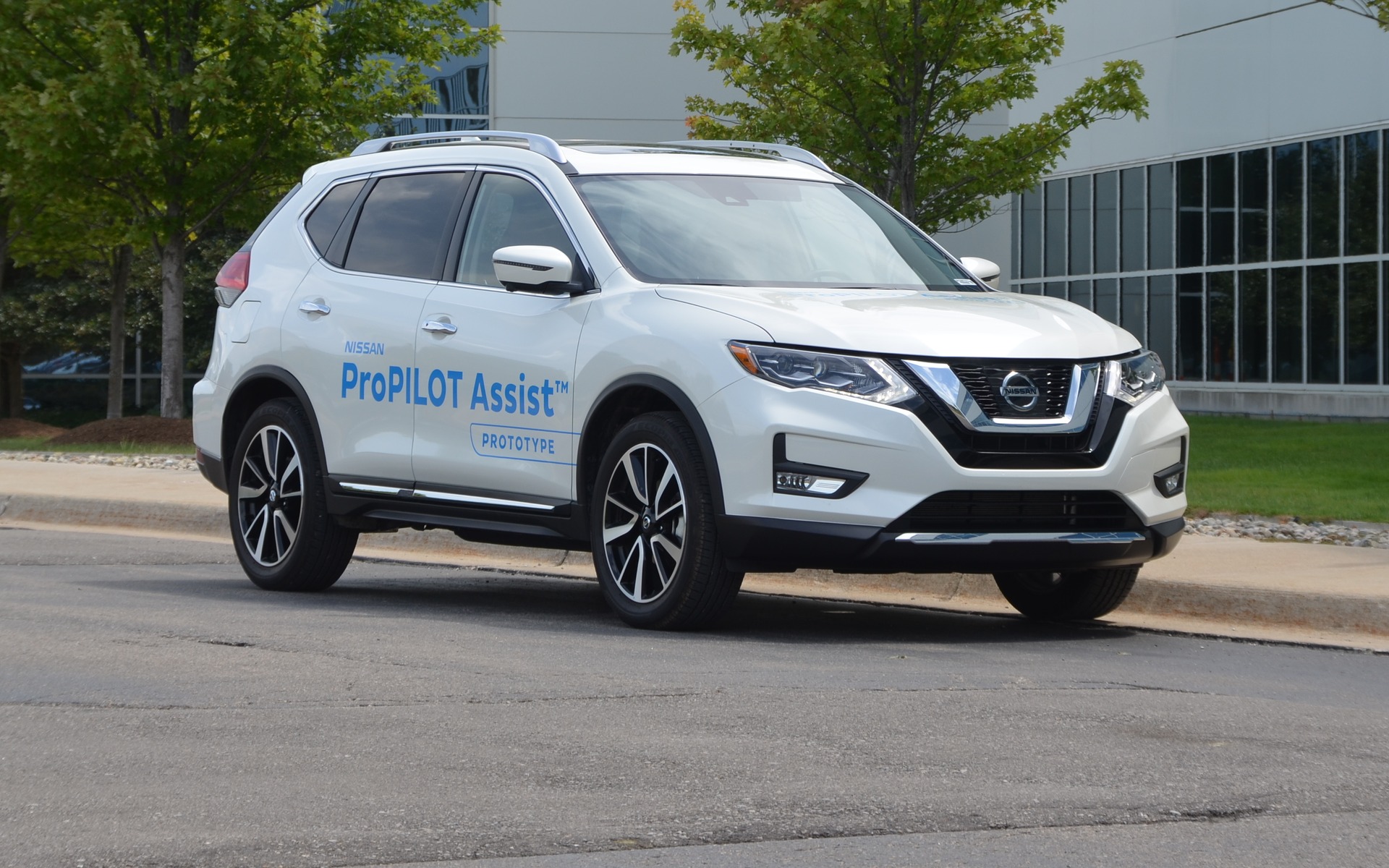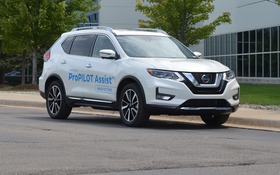Nissan ProPILOT Assist: Following the Semi-autonomous Parade… From a Distance
Nissan recently invited a few journalists to test out their new semi-autonomous driving system known as ProPILOT Assist.
Let's begin by saying that this technology will be initially offered on certain versions of the next Nissan LEAF and a dozen or so other Renault-Nissan models by 2020. Photos of a Nissan Rogue accompany this article, but that doesn't necessarily mean that ProPILOT Assist will be offered on this SUV. Nissan simply chose this model for the development of this technology in North America. ProPILOT Assist (PPA) is already in use in Japan on the Nissan Serena van, but its programming had to be adapted for the North American market for different road lines, different settings calibration, etc.
The current PPA is the first step toward semi-autonomous driving, a shift that is expected to take about four years at Nissan. For now, PPA is more accurately described as a driving aid, since the driver's attention and involvement are still required.
Two separate systems
Basically, Nissan ProPilot Assist employs two independent but complementary systems: Steering Assist and Intelligent Cruise Control (ICC).
To activate the system, press the blue button on the right branch of the steering wheel and, once the desired speed is reached (between 32 and 145 km/h), simply press the cruise control's “SET” button. PPA is then engaged and will maintain the set speed until a slower-moving car is detected in front.
Steering Assist
Using a camera located in the upper part of the windshield, Steering Assist helps the car remain between the lines on the road. This camera doesn’t actually read the lines; rather, it contrasts them with the road, which means Steering Assist is excellent at night.

In winter, even when snow hides parts of the lines, the system can compensate provided it doesn’t lose sight of them for longer than three seconds. But what if the surface is completely covered with snow? The system even detects tracks left by preceding vehicles and will follow them. But it won’t work if there isn’t enough contrast, in which case Steering Assist will warn the driver that the system is no longer engaged. Also, the system deactivates if the windshield wipers are in use.
Having tested it out on the roads and highways of Detroit one fine summer day, I can tell you that Steering Assist works very well once it can find the lines on the road. Its software is sufficiently advanced to make the ride smooth, with the car well centered between the lines. Note that PPA doesn’t allow lane changes. What’s more, if you change lanes without signalling, you’ll feel a good deal of resistance in the steering wheel. In curves, Steering Assist takes G forces into account and can slow the car down if needed.
Hands on the wheel
Steering Assist requires the driver to always keep both hands on the wheel. If not, a reminder to hold the wheel appears on the dashboard.
If the driver doesn’t comply, a warning sounds. It becomes louder and louder until it determines that the driver is either asleep or stupid, and then it applies the brakes progressively until the vehicle is completely stopped.
Intelligent Cruise Control (ICC)
The ICC helps the vehicle adjust its speed to that of the vehicle it’s following, up to a complete stop. If the vehicle in front starts again within three seconds, a Nissan equipped with ProPilot Assist will follow it. If the stop is longer than three seconds, the driver will have to restart the system by pressing the cruise control’s RES (Resume) button. Acceleration is slow and the system maintains a significant distance with the preceding vehicle, even when set to the minimum. Nissan says this is a safety precaution, but I would feel more at ease if the acceleration was a bit faster.

As it stands, PPA requires the near complete involvement of the driver. While it makes for a slightly more relaxed ride on the open road, it truly excels in reasonably heavy traffic (not stop-and-go, but almost). Note that the driver can override the PPA at all times, meaning you can suddenly decide to accelerate, brake, turn, etc.
A question of cost, obviously
Several brands already offer technology like Nissan ProPILOT Assist. And some, like Mercedes-Benz, have much more advanced systems on offer. It all boils down to cost. Mercedes can add $10,000 worth of technology in its $100,000+ S-Class and buyers won't even cringe. However, it’s an entirely different story in a car that sells for $20,000, $25,000 or $30,000.
What Nissan is offering isn’t very expensive, with the development having been done primarily at the programming level. Also, judging from how conservative ProPilot Assist is, I wouldn’t be at all surprised if Nissan’s legal department had a thing or two to say about its development.












